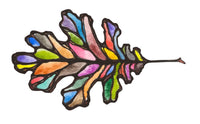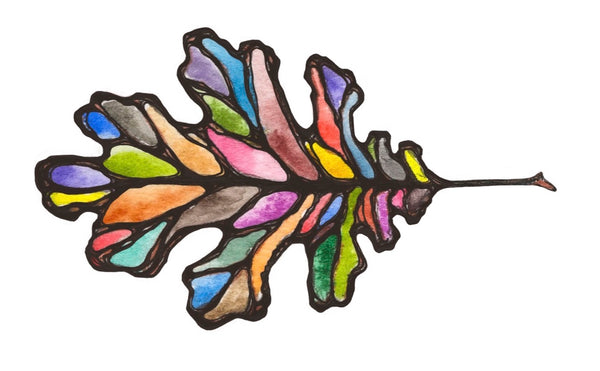
Beginning Watercolor Painting: A Guide To Choosing and Using Greenleaf & Blueberry Handmade Watercolors
Beginning watercolor painting- or anything new can feel a bit like being a little kid locked outside the house. If only you had the key- it would be so EASY to get inside! To begin you have to realize there is no key. There is no instant road to access. If there is a key at all, it is finding a way to take pleasure in learning, enjoy your practice. Focus on your journey while allowing your destination to gently guide your direction.

The thing about being locked out of the house is that it can be kind of fun… Of course, this only comes after you have finished firing vituperations at yourself and your lost keys. There are windows to test, doorknobs to jiggle, doorbells to ring, neighbors to bother. Now, lest I start sounding like I may be a cat burglar on the side, allow me remind you what an absent minded kid I was (and still am). I have found myself locked out of the house more than a few times- to the point it got to be this creative little puzzle to solve.
The key here is your approach and your practice. Be creative. Be persistent.
So, when you find yourself daunted at the beginning of a new endeavor- say beginning watercolor painting- think up a way to make it fun and find your own way in. Instead of seeing the road to achieving a new goal blocked (by fear, self-doubt, feelings of being overwhelmed, etc.), try to see any potential roadblock as a challenge that you can easily conquer as long as you use your creativity and remain persistent.
As you start out beginning watercolors, figure out what your spoonful of sugar is going to be. What is that thing that makes you excited to keep coming back? Figure it out and use it. Turn it into the carrot the you dangle from a stick in front of you that keeps you trucking forward.
This is why I think that your initial inspiration to start something new is very important to remember. Often the tools and supplies themselves are the point of inspiration. A messy watercolor kit that is somehow the source of a sketchbook full of colorful memories. A glass jar full of beautiful brushes. Don’t sell yourself short just because you are a beginner. If there is a specific watercolor set or paintbrush that has been calling to you- go for it! Don’t start out with kids art supplies just because you don’t think you are worthy of something nicer.
Being inspired by your tools and supplies can bring you much joy as you work. After all, it is your relationship with your tools that is your experience, while what you end up creating often is someone else’s.

Greenleaf & Blueberry Handmade Watercolors are an artist grade paint line. We only use quality ingredients and methods to produce our paint. They are, however, perfectly suitable for those of you beginning watercolor painting.
As a person beginning watercolor painting and approaching the Greenleaf & Blueberry paint line, I encourage you to follow your inspiration as your starting point. Maybe you are really excited to try out Malachite, but aren’t sure how it will fit into a cohesive palette. So what? There is so much you can do with even a single color, so don’t get unnecessarily weighted down by worry over not doing something “right”.

Now this isn’t a rally cry for creative anarchy. There are things about colors and techniques to learn that you will likely find really interesting and helpful- just don’t be afraid of them. Try to see them as potential tools for your proverbial art shed. Once you have learned a new method, technique, or skill, it is yours- to reach for at will and to help you craft your paintings. Focus on learning one new thing at a time and savor it.
Try to strike the right balance between inspiration, regular practice, and curiosity (learning/inventing methods and techniques). Once you learn the rules, you will have the joy of breaking them. But don’t be a slave to the rules or let learning them ruin any of your fun. They are simply tools at your disposal- for you to pick up and take along with you to use, or not.
If there is no particular watercolor paint set or assortment of specific colors that has you jazzed and you just want a starting point to begin, then I would suggest one of a few different routes when selecting your Greenleaf & Blueberry Handmade Watercolor Paints.
A great way to start is with our Landscape Watercolor Travel Set:

It includes 10 colors that are well balanced between Ochre and Mayan colors and allow good mixing options as well as offering some convenience colors.
- A convenience color is a color that you may be able to mix well enough by using some of your primary colors, but is also one that you are more likely to use a lot. Having the color itself, so that you don’t always have to take the time to mix it, is a little more convenient. Greens and browns easily fall into this category, especially for landscapes.
- Mixing options are more available when you have primary colors that are in agreement, which is to say they mix nice, clean secondary colors. (Primary colors being: red, yellow, blue. Secondary colors being: orange, green, purple)
A more minimal and budget-conscious route would be to choose around 5 individual colors, roughly one from each color category (red, orange, yellow, green etc.) Color categories that I think are most important to cover are: Red, Yellow, Blue, Green, Purple, Brown. Orange is generally the easiest color to mix, so it is one that you can acquire later on if your painting practice requires it. Green and Purple especially are a little more difficult to mix cleanly, so I enjoy having those as colors in my palette.
Think of picking the colors for your first palette as covering your bases. (However, again, let me remind you that this is just a classic starting point. If you love sketching with a pencil and black ink more than anything, maybe you will want to start with our Graphite Watercolor and an assortment of blacks and gray, and add in more vibrant colors one by one later as you go.)

If you are going to select around 5 colors, there are two general routes you can take that make nice, cohesive palettes: Ochre or Mayan. Ochre or Earth colors are rich and subdued, while Mayan colors are brighter, high chroma colors.
For those interested in an Earthier palette, I generally recommend:
Red Ochre
Yellow Ochre
Green Earth
Vivianite (Blue Ochre) or Mayan Blue (a more cost-effective and slightly bluer option)
Purple Ochre
Brown Ochre
For those interested in a brighter, more intense palette:
Mayan Red
Mayan Yellow
Mayan Green
Mayan Blue #2
Mayan Violet
Brown Ochre
Once you have your bases covered and you have been painting with your basic palette, you will likely identify areas of color that you would like to develop and diversify. Often, greens and blues are popular areas to have more options. Also, try to be aware of colors that you see but struggle with mixing. Some colors simply cannot be mixed (contrary to what popular teachings will tell you.) This is an aspect of the beauty of working with single pigment paints from natural sources. Color mixing may approximate, for example, the appearance of the color Malachite, but only Malachite paint will be exact and true. A dusty pink is another color that can add beauty to a painting, but can be tricky to mix, depending on the colors in your palette. This is why we have chosen to include it in our Landscape Set.
Beginning Watercolor Painting: 2 Exercises To Get You Started
Whether you are an expert or are just beginning watercolor painting, there are two activities that I consider indispensably useful when first getting into a new palette of colors:

- Paint your own Color Chart. I enjoy painting a full sheet sized chart for the wall near my workspace and also a miniature one that I can store with my watercolor set for reference while painting. This exercise is a great introduction to your new colors, and even to watercolor painting itself. It is a no pressure activity that is simply about getting each color, one by one, onto paper. You will immediately start to notice differences in handling, intensity, and texture as you go. I like to think of each color as having its own unique personality. The better you get to know them, the more they become your friends and allies as you paint.
- Paint your own Color Mixing Chart. This exercise is much more tedious and involved. However, it will reveal invaluable information regarding the color potential of your chosen palette. I like to think of this exercise as a sort of color boot camp. It is a great way for someone just beginning watercolor painting to dive right in and get dirty. It is straightforward and a lot of work with an awesome result. A hand-painted complete color mixing chart is an amazing tool when it is finished, and the experience of painting one will put you miles ahead in terms of familiarity with your color palette.

And the last and really best thing you can do- especially beginning watercolor painting- is just paint. Paint, paint some more, and keep painting. Make mistakes. Make ugly paintings. Create wretched festering monstrosities of color to feed your campfire while you cook your hot dogs and sip your beer while telling tall tales of the horrors you are capable of committing in your sketchbook. I’m not kidding! These are important steps that you must take when starting down any new path. Don’t think of it as failure because it is not. As long as you are showing up to keep on trying you are on the road to success, improvement, and reaching your goals. The most important thing is that you keep painting. Manage your expectations realistically, enjoy the process, and keep going.
Wishing you Happy Painting!
~Jess

